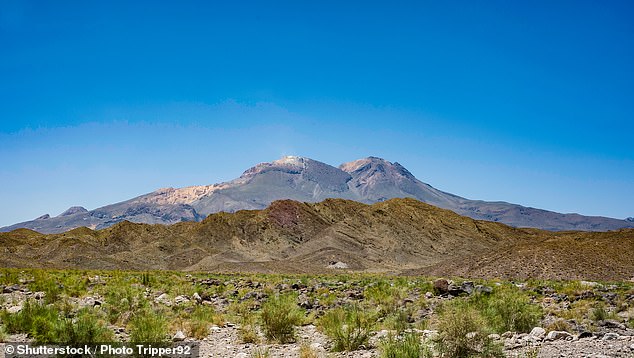A volcano long believed extinct for 710,000 years is showing signs of life.
Scientists studying Taftan, in southeastern Iran, detected a summit uplift of 3.5 inches over 10 months from 2023 to 2024, and it has yet to subside.
The team said the swelling could be caused by hot fluids and gases accumulating beneath the summit, or by magma intruding three miles below the surface and pressurizing the overlying hydrothermal system.
Local reports in 2024 also noted increased volcanic activity, including visible smoke and ash emissions from the crater. Volcanoes are classified as extinct if they have not erupted since the Holocene Era, which began 11,700 years ago.
With its recent activity, study senior author and volcanologist Pablo González told Live Science that Taftan is better described as dormant rather than extinct.
This means that while it is not currently erupting, pressure is building beneath the volcano, which could eventually be released quietly or violently in the future.
‘Our findings reveal that Taftan is more active than previously recognized,’ reads the study published this month.
The team also said the findings highlight the urgent need to reassess the Makran subduction volcanic arc, a chain of volcanoes in southern Iran and Pakistan, as new activity at Taftan suggests current hazard evaluations may be outdated.

Scientists studying Taftan, in southeastern Iran , detected a summit uplift of 3.5 inches over 10 months from 2023 to 2024, and it has yet to subside
The team found that, over the 10 months, vents at the summit released gases like water vapor, carbon dioxide, sulfur dioxide, hydrogen sulfide and hydrogen fluoride, with sulfur dioxide emissions averaging about 20 tons per day.
Volcanoes have magma and hot fluids beneath the surface, and as these materials heat up, gases are released, like water vapor, carbon dioxide, sulfur dioxide, hydrogen sulfide, and hydrogen fluoride.
When the pressure underground rises, the gases try to escape, so they move up through cracks and vents at the surface.
Two larger gas events occurred on May 16 and 28, 2024, indicating temporary increases in pressure and gas flow.
The team made the findings using a new satellite data method called the common-mode filter, which enabled them to remove interference from the atmosphere and get a much clearer picture of the ground movement.
By analyzing the timing of the uplift, they determined that the source of the deformation is shallow, about 1,540 to 2,070 feet below the summit.
The volcano’s western and eastern flanks also moved, but the pattern of deformation did not match rainfall or earthquakes, which suggested it was caused by processes inside the volcano.
‘The absence of post-unrest reversed subsidence signals highlights the potential for persistent pressurization beneath the summit, suggesting that the Taftan volcano remains a hazardous area,’ the study concluded.

Local reports in 2024 also noted increased volcanic activity, including visible smoke and ash emissions from the crater
While the study is alarming González told Live Science that there is no reason to fear an imminent eruption, he said, but the volcano should be more closely monitored.
‘This study doesn’t aim to produce panic in the people,’ he said. ‘It’s a wake-up call to the authorities in the region in Iran to designate some resources to look at this.’
Taftan is a stratovolcano located in southeastern Iran’s Sistan and Baluchestan province, near the border with Pakistan.
It stands approximately 13,000 feet above sea level, making it the highest peak in the region.
The nearest Iranian city is Khash, about 81 miles to the northwest, while Zahedan, the provincial capital with a population of over 500,000 people, lies roughly 100 miles away.
Across the border in Pakistan, the town of Taftan in Balochistan is approximately 62 39 miles northeast of the volcano and has a population of around 18,500.
If Taftan were to erupt, nearby communities could face a variety of hazards, including ashfall that could disrupt air travel, damage crops, contaminate water supplies, and cause respiratory problems.
Lava flows and pyroclastic flows would be capable of destroying infrastructure, homes and farmland.
Toxic gas emissions, such as sulfur dioxide, could lead to acid rain and poor air quality.
This article was originally published by a www.dailymail.co.uk . Read the Original article here. .

